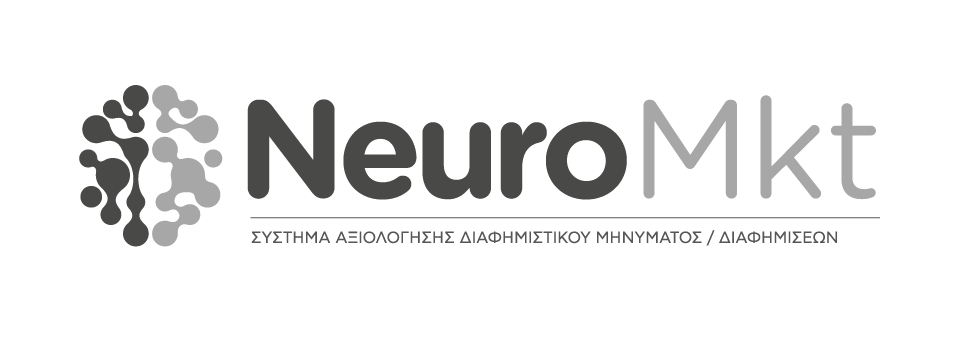| 1. |
Reconstructing EOG From EEG Timeseries: A Spatial Filtering Approach Unobtrusive mental state monitoring based on neurosphysiological signals has seen thriving developments over the past decade, with a wide area of applications, from rehabilitation to neuroergonomics and neuromarketing. Particularly, electroencephalography (EEG) and electrooculography (EOG) have been popular techniques to obtain cognitiverelevant biosignals. However, current wearable systems may still pose practical inconvenience, motivating further interest to integrate EOG+EEG recording into streamlined |
| 2. |
Sparse Graph-based Representations of SSVEP Responses Under the Variational Bayesian Framework The recognition of Steady State Visual Evoked Potentials (SSVEP) constitutes a challenging problem in Brain Computer Interfaces (BCI), especially when the number of EEG sensors is limited. In this work, we propose a new sparse representation classification scheme that extends current schemes by exploiting the graph properties of relevant features. Based on this scheme each test signal is represented as |
| 3. |
Fueled by early success stories, the neuromarketing domain advanced rapidly during the last ten years. As exciting new techniques were being adapted from medical research to the commercial domain, many neuroscientists and marketing practitioners have taken the chance to exploit them so as to uncover the answers of the most important marketing questions. Among the available neuroimaging technologies, electroencephalography (EEG) |
| 4. |
RNeuMark: A Riemannian EEG Analysis Framework for Neuromarketing Neuromarketing exploits neuroimaging techniques so as to reinforce the predictive power of conventional marketing tools, like questionnaires and focus groups. Electroencephalography (EEG) is the most commonly encountered neuroimaging technique due to its non-invasiveness, low-cost, and its very recent embedding in wearable devices. The transcription of brainwave patterns to consumer attitude is supported by various signal descriptors, while the quest for |
| 5. |
Revisiting Riemannian Geometry-based EEG decoding through Approximate Joint Diagonalization The wider adoption of Riemannian geometry in EEG processing is hindered by two factors: i) it involves the manipulation of complex mathematical formulations and, ii) it leads to computationally demanding tasks. The main scope of this work is to simplify particular notions of Riemannian geometry and provide an efficient and comprehensible scheme for neuroscientific explorations. To overcome the aforementioned shortcomings, |
| 6. |
Reconstructing EOG From EEG Timeseries: A Spatial Filtering Approach Unobtrusive mental state monitoring based on neurosphysiological signals has seen thriving developments over the past decade, with a wide area of applications, from rehabilitation to neuroergonomics and neuromarketing. Particularly, electroencephalography (EEG) and electrooculography (EOG) have been popular techniques to obtain cognitive-relevant biosignals. However, current wearable systems may still pose practical inconvenience, motivating further interest to integrate EOG+EEG recording into streamlined |
| 7. |
The objective of this article is to evaluate whether neuromarketing tools, like eye trackers and electroegephalography (EEG), in the form of an integrated software system (NeuroMkt) can be used by small-medium marketing agencies to evaluate their clients’ marketing material. Results that are based on physiological responses are more valid compared to results that are based on customers’ self-reported data. However, |
| 8. |
Harneshing the Potential of EEG in Neuromarketing with Deep Learning and Riemannian Geometry Neuromarketing exploits neuroimaging techniques to study consumers’ responses to various marketing aspects, with the goal of gaining a more thorough understanding of the decision-making process. The neuroimaging technology encountered the most in neuromarketing studies is Electroencephalography (EEG), mainly due to its non-invasiveness, low cost and portability. Opposed to typical neuromarketing practices, which rely on signal-power related features, we introduce an |
| 9. |
Exploiting Approximate Joint Diagonalization for Covariance Estimation in Imagined Speech Decoding Recently, imagined speech has become a subject of study due to its potential as an intuitive communication system. It involves registering neural responses generated by mental speaking without moving the articulators. Although it may not perform as well as other paradigms, it has multiclass scalability, making it suitable for building extensible BCI systems. Hence, our study revolves around this intuitive |
| 10. |
Neuromarketing is a continuously evolving field that utilises neuroimaging technologies to explore consumers’ behavioural responses to specific marketing-related stimulation, and furthermore introduces novel marketing tools that could complement the traditional ones like questionnaires. In this context, the present paper introduces a multimodal Neuromarketing dataset that encompasses the data from 42 individuals who participated in an advertising brochure-browsing scenario. In more |
Δημοσιεύσεις

